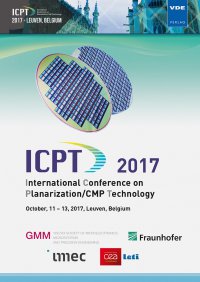Development of Advanced CMP Process for the Minimization of Hydrophobic Interaction based on the Surface Treatment Technology
Konferenz: ICPT 2017 - International Conference on Planarization/CMP Technology
11.10.2017 - 13.10.2017 in Leuven, Belgium
Tagungsband: ICPT 2017
Seiten: 4Sprache: EnglischTyp: PDF
Persönliche VDE-Mitglieder erhalten auf diesen Artikel 10% Rabatt
Autoren:
Kim, Hyuk-Min; Heo, Jee-Hwan; Kang, Jung-Eun; Park, Jong-Hyuk; Yoon, Il-Young; Yoon, Bo-Un; Nam, Seok-Woo (Process Development Team, Semiconductor R&D Center, SEC, San 14, Nongseo-dong, Giheung-gu, Yongin-si, Gyeonggi-do, Korea)
Park, Seung-Ho (Material Development P/J, Semiconductor R&D Center, SEC, San 14, Nongseo-dong, Giheung-gu, Yongin-si, Gyeonggi-do, Korea)
Inhalt:
In this study, the influence of poly-Si surface wettability on the removal of defects from CMP (Chemical Mechanical Planarization) process was investigated. The poly-Si surface is hydrophobic in nature which attracts the hydrophobic organic residues including the pad debris, slurry additives and so on. Therefore, the adhesion between organics and poly-Si surface is dominant among the defects in poly-Si polishing. For this reason, the control of poly-Si surface wettability is a key for the reduction of CMP residues. The alkaline solution which contains the hydrophilic polymer was supplied to change the surface properties in the final polishing step. The hydrophilic layer acts as a sacrificial layer for the removal of organics. The following in-situ SC-1 cleaning removes not only the hydrophilic layer but also the organics on its surface. In case of abrasive particles in slurry, they were removed by the repulsive force between the same charged poly-Si surface and particles in SC-1 process. Furthermore, the prevention of abrasive particles in the main photo keys was also confirmed. This indicates the hydrophilic polymer in poly-Si CMP process decreases the defects which can skip the cleaning process. This enables the simplification of overall semiconductor process and reduction of CoO (Cost of Ownership).


